The "commons" as defined in Euro-American contexts functions as a kind of anonymous resource in which individuals can freely take materials without permission, ethical responsibilities or social contract. No payment or gift is required, no relationship is established, and no genealogy is produced. While this commons creates a kind of "cultural reservation" that might protect artists from the rapacity of corporate greed--as Indian reservations were supposed to protect Native Americans from the rapacity of settlers--in the long run, like its colonial predecessor, it may end up as an exception that proves the rule of property. Parallel movements in indigenous culture, permaculture, and digital culture claim a far more radical ground, and suggest an alternative to the intellectual property regime at the base of colonial cultures.
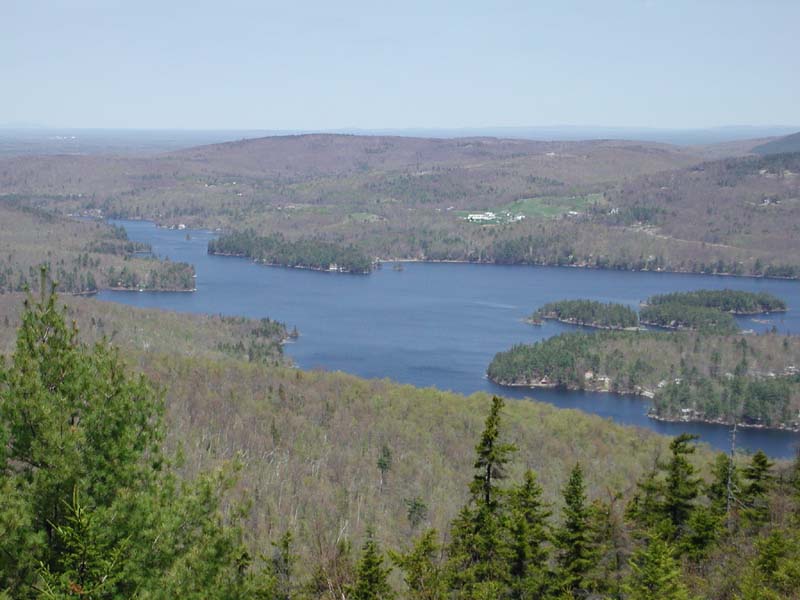 In gratitude to Pahko, the spirit that guides my work, and to the nearby loons who awaken my senses.
In gratitude to Pahko, the spirit that guides my work, and to the nearby loons who awaken my senses.
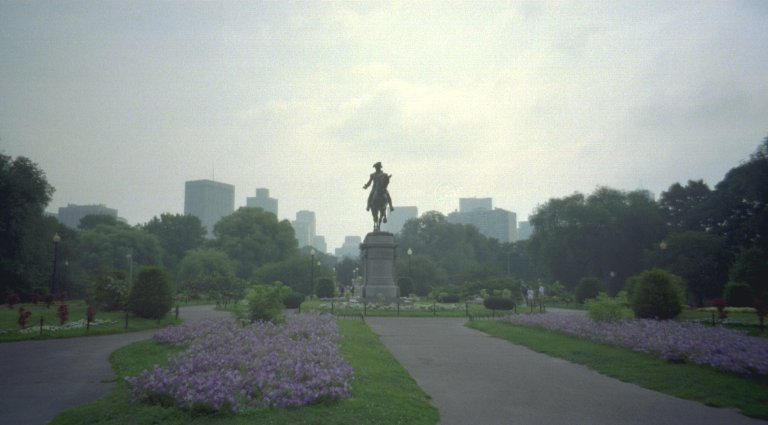 There are two ways to conceive of the Commons. Either it functions within a larger regime of property and capital, or it functions as leverage against it. In Free Culture, Larry Lessig champions the Internet as an "innovation commons" where creative individuals can remix cultural artifacts to produce new knowledge, culture, and civil disobedience. This commons functions as a kind of anonymous resource in which individuals can freely take materials without permission, ethical responsibilities or social contract. No payment or gift is required, no relationship is established, and no genealogy is produced. While this commons creates a kind of "cultural reservation" that might protect artists from the rapacity of corporate greed--as Indian reservations were supposed to protect Native Americans from the rapacity of settlers--in the long run, like its colonial predecessor, it may end up as an exception that proves the rule of property. Since the Creative Commons licenses are meant to mesh with existing commercial and copyright regimes, they ultimately risk re-inscribing a colonial view of culture, one that offers no radical critique of the market and its effects on human culture and nature. These limitations are most apparent when intellectual property laws are imposed on cultural production outside the US, especially in the case of indigenous and peasant production. Unfortunately, as Christen claims, "The rhetoric of freedom--free of restrictions--replays the structure of enclosure, open for some closed for others." [1] The variety of forms of authorship, collaboration, and resource sharing across cultures provides a formidable challenge for this culturally specific definition of creativity and value.
There are two ways to conceive of the Commons. Either it functions within a larger regime of property and capital, or it functions as leverage against it. In Free Culture, Larry Lessig champions the Internet as an "innovation commons" where creative individuals can remix cultural artifacts to produce new knowledge, culture, and civil disobedience. This commons functions as a kind of anonymous resource in which individuals can freely take materials without permission, ethical responsibilities or social contract. No payment or gift is required, no relationship is established, and no genealogy is produced. While this commons creates a kind of "cultural reservation" that might protect artists from the rapacity of corporate greed--as Indian reservations were supposed to protect Native Americans from the rapacity of settlers--in the long run, like its colonial predecessor, it may end up as an exception that proves the rule of property. Since the Creative Commons licenses are meant to mesh with existing commercial and copyright regimes, they ultimately risk re-inscribing a colonial view of culture, one that offers no radical critique of the market and its effects on human culture and nature. These limitations are most apparent when intellectual property laws are imposed on cultural production outside the US, especially in the case of indigenous and peasant production. Unfortunately, as Christen claims, "The rhetoric of freedom--free of restrictions--replays the structure of enclosure, open for some closed for others." [1] The variety of forms of authorship, collaboration, and resource sharing across cultures provides a formidable challenge for this culturally specific definition of creativity and value. Despite the cultural limitations of the Creative Commons concept, the gesture of claiming this creative ground during a pernicious corporate resource grab has at least two beneficial effects: first, it alerts us to this newest round of enclosure by the forces of capital; and second, it provides a training ground for experimenting with alternate practices. It is unclear whether these two will be sufficient to propel this work beyond colonial regimes of property. For the forces of enclosure are neither new, nor are they contained. Both historically and globally, they siphon natural and human resources into the machine of capital that is so effective at producing wealth for the few and poverty for the masses of humanity.
Despite the cultural limitations of the Creative Commons concept, the gesture of claiming this creative ground during a pernicious corporate resource grab has at least two beneficial effects: first, it alerts us to this newest round of enclosure by the forces of capital; and second, it provides a training ground for experimenting with alternate practices. It is unclear whether these two will be sufficient to propel this work beyond colonial regimes of property. For the forces of enclosure are neither new, nor are they contained. Both historically and globally, they siphon natural and human resources into the machine of capital that is so effective at producing wealth for the few and poverty for the masses of humanity.
Parallel movements in indigenous culture, permaculture, and digital culture claim a far more radical ground, and suggest an alternative to the intellectual property regime at the base of colonial cultures. And indeed recent research on the forgotten forest provisions of the Magna Carta suggests that the reclaiming of the commons may well require a reversal of the nearly thousand-year history of colonization. If the Forest Charter provisions could reverse 200 years of Norman appropriation of Anglo forests and return them to the commoners, then perhaps these movements can help their respective groups reclaim their own digital and physical commons, or at least the right to engage with cultural artifacts and natural resources in their own culturally specific ways
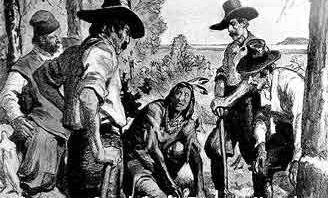 The intertwining of these three cultural responses to the Intellectual Property regimes is complex, but we might begin tracing their development by telling a story about pumpkins. First is the Native American pumpkin, one of the first New World foods brought to Europe, and symbol of a supposed Thanksgiving harvest celebrated by Pilgrims and Native Americans. Behind the myth is a history of two related but disparate commons, both at risk in the narrative of progress unleashed in North America--the commons of the Native Americans who saved the Pilgrims by teaching them how to survive in the Northeast, and the dwindling commons in Britain whose defenders were rioting against the enclosures enacted by their own Puritan elite. One of the Native American commons was the free sharing of information about planting, navigation, fishing, medicine and local dangers that Tisquantum, a Patuxet Indian, taught the Pilgrims during his year living with them. This commons also included the land gift of Tisquantum's former Native village of Patuxet to the Pilgrims who renamed it Plymouth.
The intertwining of these three cultural responses to the Intellectual Property regimes is complex, but we might begin tracing their development by telling a story about pumpkins. First is the Native American pumpkin, one of the first New World foods brought to Europe, and symbol of a supposed Thanksgiving harvest celebrated by Pilgrims and Native Americans. Behind the myth is a history of two related but disparate commons, both at risk in the narrative of progress unleashed in North America--the commons of the Native Americans who saved the Pilgrims by teaching them how to survive in the Northeast, and the dwindling commons in Britain whose defenders were rioting against the enclosures enacted by their own Puritan elite. One of the Native American commons was the free sharing of information about planting, navigation, fishing, medicine and local dangers that Tisquantum, a Patuxet Indian, taught the Pilgrims during his year living with them. This commons also included the land gift of Tisquantum's former Native village of Patuxet to the Pilgrims who renamed it Plymouth.
While this sharing of information and land ensured the Pilgrims' survival in the New World, it proved insufficient for a people who believed they had been sent to subdue the heathen and spread god's kingdom over the satanic savages in the wilderness. The natural and customary rules that would suggest a return of gifts or resources from the Pilgrims to the Natives never occurred. By 1636, under pressure of an exploding settler population, the Pilgrims triggered King Phillip's war with the massacre of 600 Narragansett villagers, a war which was to be the bloodiest in New England history, a war that eroded the New World commons as effectively as Cromwell's purge of Levellers from the New Model Army eradicated the British commons. [2]
During the settler land-grab in the Americas, a similar land grab was occurring in England in the centuries old battle for the control of the forest commons, a right guaranteed by the Magna Carta. Resisters of enclosure, the Blacks and Levellers were described as "rough and savage in their Dispositions." In Peter Linebaugh's analysis of the links between race, slavery and the commons, he notes that these Commoners were considered to be a "sordid race" and "compared to the Indian, to the savage, to the buccaneer, and to the Arab." [3]
During the 17th and 18th century, both sets of commoners with a survival stake in the lands they shared would lose their ground. In both cases, lands were enclosed and privatized, and in the US, citizenship and thus freedom for the settlers would be tied to the ownership of this stolen land.
A reincarnation of the Thanksgiving pumpkin might be found in the permaculture pumpkin patch: a plant guild composed of corn, squashes or pumpkins, and beans. While Northeast Native Americans were early practitioners of sustainable forms of agriculture, that included the Three Sisters plant guild, some settler cultures, eventually transformed by the lands they occupied, began to recognize the benefits of these practices. Drawing on both indigenous knowledge and long-term and close observation of nature, Australians Bill Mollison and David Holmgren devised intensive, but sustainable methods of agriculture, social organization, and self-government that became the permaculture movement. Based on systems thinking and on replicating patterns found in nature, permaculture stresses interdependent relationships, like those found among companion plants, plant guilds, plant communities, local ecosystems, ecotones and bioregions--moving from local to regional. 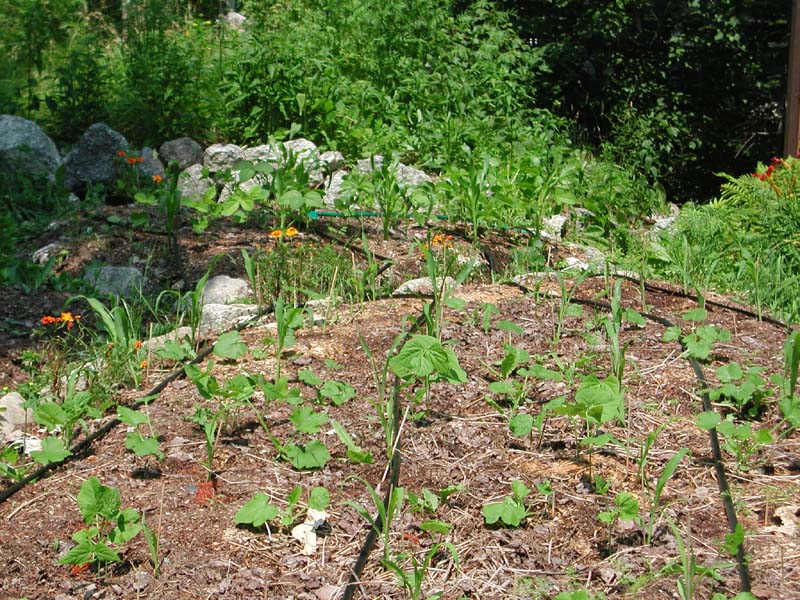 In the Three Sisters guild, corn, squash (including pumpkins), and beans grow together in a synergistic and mutually beneficial system. The beans feed the corn with much needed nitrogen, the corn provides a structure for the beans to climb, and the squash with its lush, prickled foliage acts as a natural mulch and pest inhibitor, keeping insects, slugs, and raccoons from eating the ripened corn. Each member of the guild both gives and takes something from the community, and in the end the soil itself is nourished rather than depleted as it is in single-yield, industrial monoculture. Guilds, plant communities, food forests, herb spirals, water and energy catchment--most of the methods popularized in permaculture can be found in peasant and indigenous communities, which have forged complex relations to the ecosystems around them--relations that have ensured survival over ten of thousands of years. Placed beside the provisions of the forest charter, which provides for sustainable uses of the forest by local people--for herbage, pannage, eyries etc.--they look very familiar. [4]
In the Three Sisters guild, corn, squash (including pumpkins), and beans grow together in a synergistic and mutually beneficial system. The beans feed the corn with much needed nitrogen, the corn provides a structure for the beans to climb, and the squash with its lush, prickled foliage acts as a natural mulch and pest inhibitor, keeping insects, slugs, and raccoons from eating the ripened corn. Each member of the guild both gives and takes something from the community, and in the end the soil itself is nourished rather than depleted as it is in single-yield, industrial monoculture. Guilds, plant communities, food forests, herb spirals, water and energy catchment--most of the methods popularized in permaculture can be found in peasant and indigenous communities, which have forged complex relations to the ecosystems around them--relations that have ensured survival over ten of thousands of years. Placed beside the provisions of the forest charter, which provides for sustainable uses of the forest by local people--for herbage, pannage, eyries etc.--they look very familiar. [4]
Compare the integrated management of permaculture with article 12 of the forest charter of the Magna Carta: "Henceforth every freeman, in his wood or on his land that he has in the forest, may with impunity make a mill, fish-preserve, pond, marl-pit, ditch, or arable in cultivated land outside coverts, provided that no injury is thereby given to any neighbour." Two principles stand out here: 1) usage produces no injury, neither to the forest, nor to the neighbor--there is clearly a complex web of relations here that ties neighbors to forest resources; 2) usage is local, and its effects are related to a neighbor. [5] Under this provision there would be no drilling for oil in the Arctic National Wildlife Refuge, because the benefits go to non-local agents who have no care or relationship to the land, and furthermore the damage affects both natural and human neighbors. Thus the Forest Charter refers to customary usage--which predates nobility, legal system, and governments--customs which reflect both ethical and community concerns, though already diluted from the complex forms of interdependence found in the New World. Permaculture communities seek to rebuild these, or similar, sustainable customary practices in a modern context. They depend on local solutions rather than centralized, global bureaucracies--whether political or economic--for meeting human needs. And they may very well be the mammals that survive the dinosaurs of industry and capital.
The indigenous and permaculture communities have curious allies in the digital community. The digital "patch pumpkin," a token of trust and a method of self-government found in the digital commons of open source software, may be an emergent form of these evolutionarily learned human impulses. How does a "patch pumpkin" resemble its metaphoric siblings? Most notably, the patch pumpkin helps establish social, political, and economic protocols for collaborative work. Perl programmers do this by passing around the "patch pumpkin." Whoever has the pumpkin is in charge of managing the workflow. As the story goes, the name originated in the Perl community with Chip Salzenberg and co-worker David Cory. At one of David Cory's previous jobs, many systems relied on a tape drive for backup. "But instead of some high-tech exclusion software, they used a low-tech method to prevent multiple simultaneous backups: a stuffed pumpkin. No one was allowed to make backups unless they had the 'backup pumpkin'." [6] During one Perl work session Chip asked, "Who has the patch pumpkin?" And, as "patching" is the term used for controlling workflow in Perl--i.e. making a patch, testing a patch, incorporating a patch; a patch being a module of code--the name stuck. 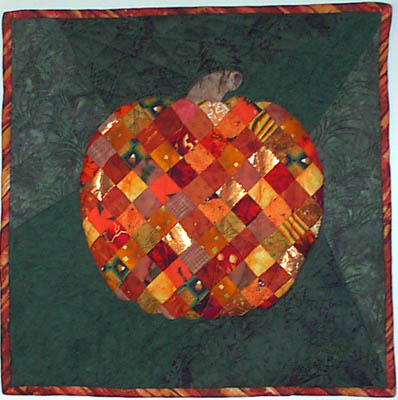 What is worth noting about this patch pumpkin is that it is a low-tech solution for developing trust among a group of programmers, that it initially depended on face-to-face meetings and physical distribution of a stuffed pumpkin to establish a trust metric, and that responsibility passed around the group, ensuring a kind of working democracy. All of this was operating in a gift economy in which programmers contributed to and benefited from a common project, from which they developed a sense of both community and identity. This emerging digital commons builds meaningful relationships around non-coercive work in a context of self-government, all conspicuously absent from the nature of paid work in our culture. Against this model, paid work begins to look like the wage-slavery described by the YES MEN in their anti-globalization campaigns, a slavery that became necessary during the enclosure of the commons in Europe and North America, an enclosure that continues to be forced on indigenous and peasant people around the world in the name of progress and free trade. [7]
What is worth noting about this patch pumpkin is that it is a low-tech solution for developing trust among a group of programmers, that it initially depended on face-to-face meetings and physical distribution of a stuffed pumpkin to establish a trust metric, and that responsibility passed around the group, ensuring a kind of working democracy. All of this was operating in a gift economy in which programmers contributed to and benefited from a common project, from which they developed a sense of both community and identity. This emerging digital commons builds meaningful relationships around non-coercive work in a context of self-government, all conspicuously absent from the nature of paid work in our culture. Against this model, paid work begins to look like the wage-slavery described by the YES MEN in their anti-globalization campaigns, a slavery that became necessary during the enclosure of the commons in Europe and North America, an enclosure that continues to be forced on indigenous and peasant people around the world in the name of progress and free trade. [7]
So we have three kinds of pumpkins, each suggesting to us movements towards reclaiming the commons, not as an endangered preserve in a regime of property, but as complex economic, social, and political alternatives to that regime. These complex networks of relationships, resources, and practices are designed to perpetuate fertility and abundance in the communities that form them. The Eden that Europeans described when they reached North America was not a wilderness, but a well-managed resource, a complex combination of nature and culture, ecology and economy, a system so subtle and effective that it eluded the settlers who saw only natural wealth free for the taking. The result of this land grab in North America is that only 2% of the land is now wild, its major rivers are polluted, its lakes have caught fire, and its forests are dying from the top down. The tragedy of this commons was that it never really was a commons after colonization, but was surrendered to plunder, privatization, and exploitation in the name of Manifest Destiny and progress. [8]
To return to a tribal commons, both for contemporary land management and its digital counterpart will demand reevaluating some of the so-called freedoms of the colonial commons. Consumerism has taught us that free culture is detachable: I can download, consume, and remix a Creative Commons-licensed MP3 without ever contacting its author. Free culture is also presumed to be disposable: I can drag that MP3 to the trash when I'm done with it--and do the same with my laptop once I upgrade to a better one. Detachment and disposability depend on disinterest: in place of entertainment monopolies like Sony and Time Warner, free culture proposes a "free market of ideas" where a democratic process selects which cultural artifacts gain support and endure--with the side effect, of course, that all artifacts that don't garner acclaim pass into oblivion.
But free culture's tropes of detachment, disposability, and disinterest are not the only possible foundation for an alternative to monopolistic cultural production. Indigenous culture, permaculture, and digital culture offer three different and powerful dynamics: catchment, circles, and care.
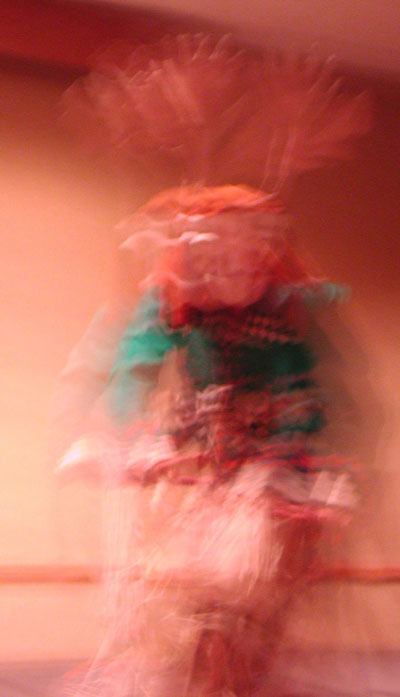 The following examples from Native practices can help us move beyond the commons as a free resource pool to a social practice in which creativity and kinship are intertwined.
The following examples from Native practices can help us move beyond the commons as a free resource pool to a social practice in which creativity and kinship are intertwined.
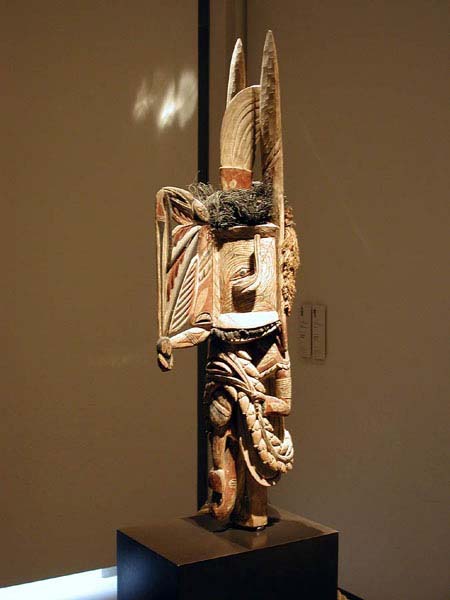 The term catchment derives from permaculture, where we will see it has a specific meaning. In an indigenous context, however, catchment is a useful antithesis for the economic detachment required for a globalized market. The production of Malanggan cloth in Papua New Guinea follows a logic of ownership that entangles rather than detaching its object from the context of its making. To produce a new design, an artist must "purchase" an already existing design, by viewing this design in a public showing. After this brief showing, the artist must hold the design element in memory until a compelling experience triggers a significant revision of the original. But in order to realize the new vision the "owner" of the element must find a carver or weaver to realize it, since people do not "materialize their own images." [9] The new image (both original and derivative at the same time) emerges as a collaboration among a number of sources--the original owner, the new owner, the fabricator, and ultimately the owner in the next generation who will similarly modify it.
The term catchment derives from permaculture, where we will see it has a specific meaning. In an indigenous context, however, catchment is a useful antithesis for the economic detachment required for a globalized market. The production of Malanggan cloth in Papua New Guinea follows a logic of ownership that entangles rather than detaching its object from the context of its making. To produce a new design, an artist must "purchase" an already existing design, by viewing this design in a public showing. After this brief showing, the artist must hold the design element in memory until a compelling experience triggers a significant revision of the original. But in order to realize the new vision the "owner" of the element must find a carver or weaver to realize it, since people do not "materialize their own images." [9] The new image (both original and derivative at the same time) emerges as a collaboration among a number of sources--the original owner, the new owner, the fabricator, and ultimately the owner in the next generation who will similarly modify it.
This kind of multiple ownership creates a legal nightmare for IP law. But among the craftspeople of Papua New Guinea, it produces a dense network of relationships, as well as serving as a metaphor for cultural preservation and loss at each generation. The Malanggan, a distributed object, produces identities dispersed across time and space. This means that the creativity lies not in the object, but in the technologies of distribution, which create genealogies similar to those produced in The Pool, an online environment which fosters artistic collaboration by encouraging and tracing trajectories of creation. [10] Malanggan unites the synchronous collaboration of image holder and maker, as well as the asynchronous collaboration of past, present and future images. As Leach observes, ownership in these conditions connects people rather than separating them as it does in the West. And these connections are critical to the "preservation of the social conditions of creativity itself." [11]
In I Become Part of It, Joseph Epes Brown, an anthropologist who lived and worked with Lakota Medicine Man, Black Elk, describes the practices that characterize tribal life in many parts of North America, practices that help us understand the confusion between Tisquantum's generosity and the Pilgrims' rapacity in the face of common resources. [12] In tribal life, art is not separated from craft, but permeates all of life. The value of art, then, cannot precipitate into an art object that can be sold or placed in a museum, but rather its value lies in the entire activity of production and distribution. The aid and land given to the Pilgrims was a way to build alliances and share knowledge, not an exchange of commodities. Similarly, to make a basket, a Native woman gathering grasses prays and makes offerings for the resources she takes; when she moistens the grass with her lips, she also "gives her life breath" [13], and these sacred dimensions create relationships linking her to the place and time of gathering, the grasses, and the person to whom she will give the basket. The making of the basket establishes kinship bonds that weave the natural and cultural world together. In these examples, nature is not a resource to be exploited for creative or commercial uses, but a set of material relationships that sustains sacred and material life. 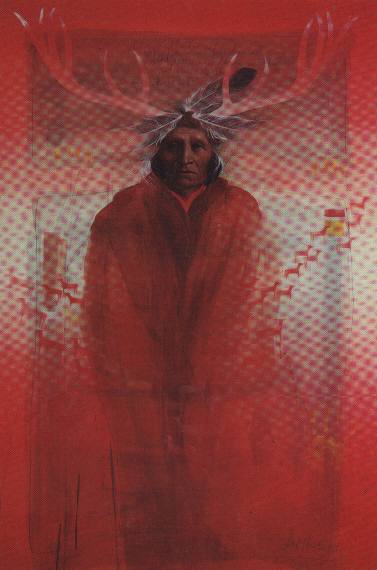 Brown points to the Lakota tipi as a microcosm of the world, for example, with the fire in the center representing Wakan Tanka, the Great Mysterious. Hanging in a museum, without the central fire drawing the gaze of the children while the elders tell stories, the tipi becomes an inert object. [14] Similarly, in "It's Where You Put Your Eyes," Sam Gill talks about the power of masks coming from the inside view, the view the wearer has when he dons the mask and sees the faces of those who behold it. [15] He quotes the Navajo Emory Sekaquaptewa performing as a kachina: "the use of the mask in the kachina ceremony has more than just an aesthetic purpose [...] when he [the performer] dons the mask he loses his identity and actually becomes what he is representing"....the audience becomes his personal self. He tries to express to himself his own conceptions about the spiritual ideals that he sees in the kachina." [16] And in doing so he does not represent the spiritual world, but rather he becomes the spirit he is seeking. [17] Thus, once a mask is placed in a museum, so viewers can appreciate its "aesthetic" qualities, it has lost its real cultural power.[18] The "executable power" of this art requires participation and interaction, just as digital forms do. [19]
Brown points to the Lakota tipi as a microcosm of the world, for example, with the fire in the center representing Wakan Tanka, the Great Mysterious. Hanging in a museum, without the central fire drawing the gaze of the children while the elders tell stories, the tipi becomes an inert object. [14] Similarly, in "It's Where You Put Your Eyes," Sam Gill talks about the power of masks coming from the inside view, the view the wearer has when he dons the mask and sees the faces of those who behold it. [15] He quotes the Navajo Emory Sekaquaptewa performing as a kachina: "the use of the mask in the kachina ceremony has more than just an aesthetic purpose [...] when he [the performer] dons the mask he loses his identity and actually becomes what he is representing"....the audience becomes his personal self. He tries to express to himself his own conceptions about the spiritual ideals that he sees in the kachina." [16] And in doing so he does not represent the spiritual world, but rather he becomes the spirit he is seeking. [17] Thus, once a mask is placed in a museum, so viewers can appreciate its "aesthetic" qualities, it has lost its real cultural power.[18] The "executable power" of this art requires participation and interaction, just as digital forms do. [19]
What is interesting to note is that while Native conceptions of the sacred embrace all of Creation, the articulation of spiritual life is very specific and local, based closely on the particularities of the seasons, the flora and fauna, and the geography of their homelands. So the power of cultural practices is contextual and local, rather than universal. Not being universal, they are hard to commodify and dispose of in a system of abstract and equal exchange value.
Leach describes an interesting example of these local practices in his discussion of the "purchase" of the tunes, words, and carvings of a Tambaran spirit in Papua New Guinea: "One aspect of Tambaran is a male musical cult with secret ritual paraphernalia. The tunes and designs [...] have a named owner. Yet this ownership does not give the right of disposal. They are not 'property,' yet they are transacted." [20] In Papua New Guinea, the transaction of a Tambaran spirit requires elaborate rituals, including contact between the "purchasers" and ten of the Tambaran owners, and offerings of a pig, cooked and distributed by the sellers in a public recognition of the transfer of the spirit.
Payment, however, does not give the new owners complete rights to do anything they want, as is the case with purchase of goods or lands in much of the developed world. Once purchased, the new "owners" must maintain respect and honor for the spirit, including following elaborate rules for its development within the new context and ensuring its propagation to future generations. [21] Furthermore, what differentiates this "purchase" from a commodity purchase is that there is no object to own. Rather what has been purchased is a particular kind of relationship with specific spirits, that is, the right to practice a kind of sacred ritual that recognizes prior relations between that spirit and a particular community. This is very different from disposability.
The notion that creation entails responsibility, that creators may not be entirely free to "dispose" of their inventions however they like--is anathema to our society's rabid obsession with turning every conceivable scientific discovery into a cash cow. The right to turn culture into cash derives from John Locke's view that cultural value accrues to natural resources when they are manipulated by the labor of the maker. The artist's labor becomes the mark of authorship and guarantor of ownership. In this view, Nature in itself has no value until it is used, developed, commodified, or put through the mill of human labor and industrialization. Its value, then, becomes an abstract sale value--how much profit it can bring the maker. In a "free market" where natural resources are free for the taking or available to the highest bidder, clean water, clean air, forests, beaches, wetlands, and arctic refuges exist outside a cultural or even natural network of relationships, can be modified or manipulated at the owner's discretion, because in themselves, they add nothing to the GNP. In such an economy, Nature is merely a resource, and has no inherent economic value. Following New Zealand MP Marilyn Waring's analysis of free market economics, the destruction accompanying the Exxon Valdez oil spill is terrific for GNP, so is prostitution of ten-year old girls in Thailand; whereas the Arctic National Wildlife refuge is worth nothing until compromised in the process of oil extraction [22], and the pristine Passamaquoddy bay in Northern Maine is worth more to the local community if its natural resources are compromised for the processing of Liquefied Natural Gas. [23]
By contrast to the disposability inherent in capital accounting methods, Brown claims that reciprocity "permeates so many aspects of North American cultures." [24] He defines reciprocity as a "process wherein if you receive or take away you must always give back." This view conceives of time and life as permeated by circles, of processes that repeat and return. "Everything comes back upon itself." Providing inspiration for the permaculturists that would follow, Native people were close observers of nature, which is where they perceived these living cycles, "the birds build their nests in circular form, foxes have their dens in circles, the wind in its greatest power moves in a circle." [25]
Compare this to the linear view of history that places "Man" at the center, and views the changes attendant upon expanding colonization and globalization as "progress." In the developed world, despite Ptolemy's confirmation that the world is a sphere, and Galileo's proofs that the earth revolves around the sun, economists still boldly claim that The World is Flat [26], and that the universe revolves around humans, who are the pinnacle of a linear evolution. Without these ideological supports, the notion of property would collapse, and the appropriation of Native culture and natural resources that drive globalization would lose their main ideological foundations. Without these foundations, the destruction of nature, and the enslavement and exploitation of human beings would appear as the abomination that it is in Native eyes. And when the machine of globalization is prevented from consuming what is left of the natural and cultural resources of the world, then the unsustainable systems that this intensive feeding supports will collapse under their own weight, and new more equitable and sustainable systems will replace them--a view that resonates in Native Culture, Permaculture, and Digital Culture. [27]
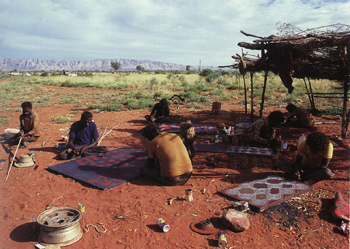 In Papua New Guinea, as in many tribal societies, cultural production--what some descriptions of open source refer to as "gift-giving"--is "an action performed within the context of reciprocity and expectations of return--status, rights, or more gifts." [28] It is not altruism--which is motivated at some level by ego--that produces these complex structures, but rather a kind of enlightened self-interest, one that recognizes the self as part of many, larger networks upon which the self depends for its livelihood. The similarities between collaborative production in tribal societies and in the digital economy are not trivial. Though the former measures its age in millennia and the latter in decades, "both are based on the self-interested participation of individuals and communities linked by a complex web of rights and obligations." [29] In both, cultural production can be viewed as the formation of kinship patterns (with people, natural world, land, resources, fellow programmers) that are economically viable. What their example suggests is that if you have the right kind of kinship family, community, and land--you do not need a job. In fact, if you extend these kinship structures far enough, as Native Americans did, and as McLuhan predicted would happen with electronic media, you no longer need the nation. [30]
In Papua New Guinea, as in many tribal societies, cultural production--what some descriptions of open source refer to as "gift-giving"--is "an action performed within the context of reciprocity and expectations of return--status, rights, or more gifts." [28] It is not altruism--which is motivated at some level by ego--that produces these complex structures, but rather a kind of enlightened self-interest, one that recognizes the self as part of many, larger networks upon which the self depends for its livelihood. The similarities between collaborative production in tribal societies and in the digital economy are not trivial. Though the former measures its age in millennia and the latter in decades, "both are based on the self-interested participation of individuals and communities linked by a complex web of rights and obligations." [29] In both, cultural production can be viewed as the formation of kinship patterns (with people, natural world, land, resources, fellow programmers) that are economically viable. What their example suggests is that if you have the right kind of kinship family, community, and land--you do not need a job. In fact, if you extend these kinship structures far enough, as Native Americans did, and as McLuhan predicted would happen with electronic media, you no longer need the nation. [30]
IP regimes have notoriously failed indigenous peoples trying to preserve and practice their cultural life in the context of colonization and globalization. [31] Partly this is because these regimes offer only simple alternatives of closed proprietary models, or open libertarian models. [32] Neither addresses the nuances of indigenous cultural production, where information does not necessarily want to be free, but where it may require care. Myers describes such a dynamic among the Australian Pintupi whose words for property, walytja and yapunta, describe types of relationship that resemble family ties more than commodity rights. [33] Walytja signifies relative, whereas yapunta signifies an orphan, one who is not cared for. Similarly, someone who 'steals' the cultural artifact of another kin group in Papua New Guinea is assumed to be signaling a desire to be included in the kinship group from which he is stealing, and thus through elaborate ritual is brought into the fold. [34] These examples suggest that cultural practice may depend not on ownership, authorship and its attendant rights, but on kinship, belonging, and the rituals of inclusion--all hallmarks of care.
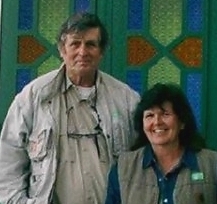 The aim of permaculture is simple: create wealth without doing damage. [35] In order to accomplish this, permaculture envisions nature as a complex network in which humans collaborate with other life forms--much as plants in a guild cooperate--to produce harmonious and sustainable energy systems. The approach is glocal: emergent bottom-up local solutions produced through trial and observation and cognizant of larger, global forces, both natural and cultural. By stimulating interdependence locally, permaculture moves away from centralized models of production and consumption that require massive energy input, institutions and technology to manage. By reversing current centralizing and globalizing trends and practices, humans can halt the resource destruction that produces financial capital and move toward resource creation in the form of natural and human capital.
The aim of permaculture is simple: create wealth without doing damage. [35] In order to accomplish this, permaculture envisions nature as a complex network in which humans collaborate with other life forms--much as plants in a guild cooperate--to produce harmonious and sustainable energy systems. The approach is glocal: emergent bottom-up local solutions produced through trial and observation and cognizant of larger, global forces, both natural and cultural. By stimulating interdependence locally, permaculture moves away from centralized models of production and consumption that require massive energy input, institutions and technology to manage. By reversing current centralizing and globalizing trends and practices, humans can halt the resource destruction that produces financial capital and move toward resource creation in the form of natural and human capital.
ABOVE: Permaculture innovators Charles and Julia Yelton
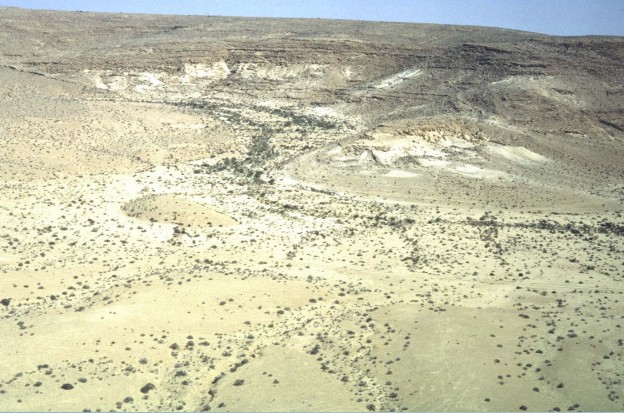 Catchment, nature's method of wealth accumulation and energy storage is permaculture's alternative to capital. Where capital is centralized accumulation that resists redistribution, catchment is a system for accumulating a critical mass of a needed resource, like water or soil minerals, in order to trigger self-organizing system, i.e. life forms, that then spread over the landscape. Some natural examples of catchment include the sun, plant carbohydrates, bodies of water, geothermal energy, and plate tectonics.
Catchment, nature's method of wealth accumulation and energy storage is permaculture's alternative to capital. Where capital is centralized accumulation that resists redistribution, catchment is a system for accumulating a critical mass of a needed resource, like water or soil minerals, in order to trigger self-organizing system, i.e. life forms, that then spread over the landscape. Some natural examples of catchment include the sun, plant carbohydrates, bodies of water, geothermal energy, and plate tectonics.
How does catchment work? Since the "driving force behind all natural systems" is energy [36], catchment focuses on ways to capture naturally occurring flows of energy in such a way as to maximize the yield over time and space. As we know, entropy is the natural tendency to disorder, but it is balance by an opposing tendency toward self-organization--or what we call life. This kind of self-organization happens "whenever energy flows are sufficient to generate storages." [37] Even small storages of energy can trigger an explosion of life. 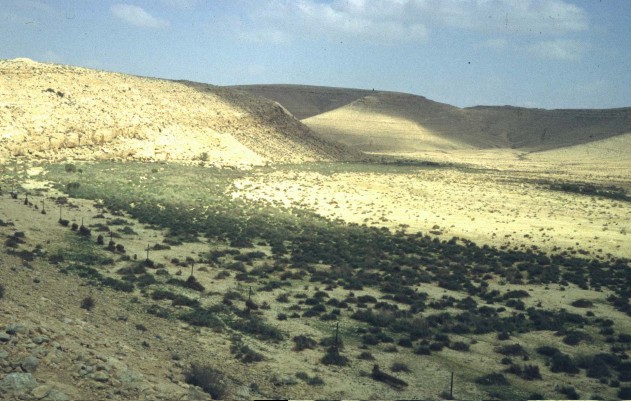 Like capital, catchment proceeds via an initial concentration of resources. How those two systems distribute resources in the long run, however, is very different. In capital, positions initially favored with power and wealth continue to aggrandize the latter through reinvestment of profit, and over time the rich only get richer relative to the poor. While capitalist's apologists claim that the elevation of the rich eventually raises the standard of living for all, history demonstrates that the gap between rich and poor only steepens with time.
Like capital, catchment proceeds via an initial concentration of resources. How those two systems distribute resources in the long run, however, is very different. In capital, positions initially favored with power and wealth continue to aggrandize the latter through reinvestment of profit, and over time the rich only get richer relative to the poor. While capitalist's apologists claim that the elevation of the rich eventually raises the standard of living for all, history demonstrates that the gap between rich and poor only steepens with time.
If the metaphor of capitalism is building a pyramid on the desert, the metaphor of catchment is growing a forest from the desert. In his film Planting in Drylands [38], Bill Mollison shows a small rolling device that forms tiny divots over the desert floor. These small depressions in an otherwise flat surface collect dew and stray seed, so that over a surprisingly short amount of time, small sprouts shoot up, which in turn are able to collect more dew and hold more water in the soil. Under the right conditions, this positive feedback loop can actually turn a desert path to a living one with minimal human intervention--not even the need to sow seeds. Whether the result is a grassland or forest, the terrain moves from a handful of green spots to a terrain so evenly covered with life that it is no longer possible to find the spots where the wealth was initially concentrated. Nature is the original Leveller. In contrast, capital's initial concentrations of "green" are conspicuous--just look for the mansions and sports cars that herald a tycoon at the top of his pyramid.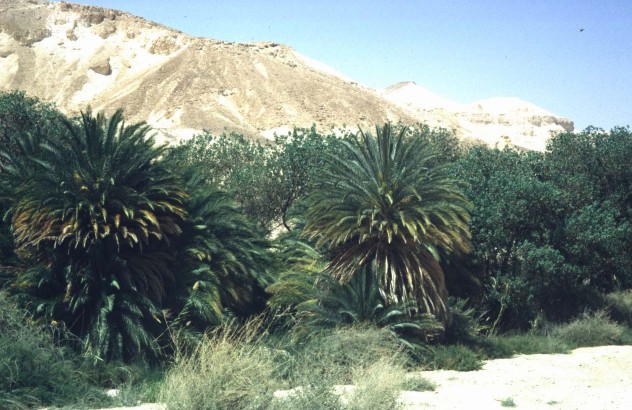 Unlike capital, whose increase is measured only in financial terms, catchment wealth is measured in terms of real wealth. It replaces short-term, centralized profit, with "long-term asset building for the benefit of future generations." [39] The real wealth assets here refer to soil fertility, seed saving, reforestation, keyline water harvesting, and carbon, water and nutrient storage in the landscape. Natural capital like water, living soil, trees, and seed help insure low-energy sustainability because they are 1) self-maintaining; 2) have low depreciation rate; 3) are easily tapped with simple technology; and 4) resist monopolization, theft and violence. So in addition to long-term real wealth accumulation, catchment also produces long-term security, first by eliminating the need for energy-based resource wars like the current Iraq war, and second, by building local stores of wealth that are distributed across the landscape and locked in ecosystems and thus hard to steal without mobilization of armies against the local community--which unfortunately is the pattern of current enclosure in the developing world.
Unlike capital, whose increase is measured only in financial terms, catchment wealth is measured in terms of real wealth. It replaces short-term, centralized profit, with "long-term asset building for the benefit of future generations." [39] The real wealth assets here refer to soil fertility, seed saving, reforestation, keyline water harvesting, and carbon, water and nutrient storage in the landscape. Natural capital like water, living soil, trees, and seed help insure low-energy sustainability because they are 1) self-maintaining; 2) have low depreciation rate; 3) are easily tapped with simple technology; and 4) resist monopolization, theft and violence. So in addition to long-term real wealth accumulation, catchment also produces long-term security, first by eliminating the need for energy-based resource wars like the current Iraq war, and second, by building local stores of wealth that are distributed across the landscape and locked in ecosystems and thus hard to steal without mobilization of armies against the local community--which unfortunately is the pattern of current enclosure in the developing world.
While catchment in nature and in permaculture has clear payoffs, there are more pressing reasons to adopt this technique in place of the dominant capital model of wealth creation. Under current free market economics, "we have been living by consuming global capital in a reckless manner that would send any business bankrupt." [40] The results are resource wars; destruction of independent, sustainable lifestyles and replacement with dependent pauperization; destruction of ecosystems worldwide; global warming; and collapsing political structures that erode the very freedoms upon which they are based
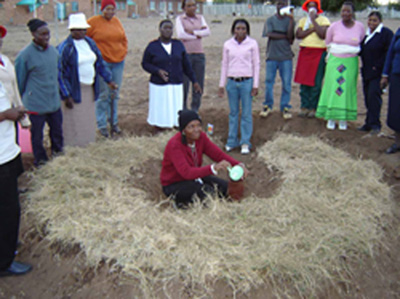 If the poetry of Native cultures lies in circles and cycles, the poetry of permaculture lies in feedback loops. In nature negative feedback mechanisms, like predators, natural disasters and parasites have the effect of keeping populations healthy and their numbers under control. They also discourage unsustainable behaviors. Positive feedback loops are the kind we saw in guilds and plant communities where synergies develop between species in particular microclimates. In a massively centralized economy, where basic needs are produced far from where they are consumed, it is very difficult for people to note the effects of the systems that sustain them. When a river is polluted, few people hold up their newspapers as the culprit, when ground waters are contaminated no one holds up the dinner plate laded with pesticide-produced produce. In the local ecosystems of permaculture, it is much easier to identify negative feedback and to make adjustments. When the family dog dies an early and unnatural death, the farmer may re-evaluate the heavy use of pesticides on his crops. Taking responsibility for the state of the world is, for permaculturists, the first step toward empowerment and change.
If the poetry of Native cultures lies in circles and cycles, the poetry of permaculture lies in feedback loops. In nature negative feedback mechanisms, like predators, natural disasters and parasites have the effect of keeping populations healthy and their numbers under control. They also discourage unsustainable behaviors. Positive feedback loops are the kind we saw in guilds and plant communities where synergies develop between species in particular microclimates. In a massively centralized economy, where basic needs are produced far from where they are consumed, it is very difficult for people to note the effects of the systems that sustain them. When a river is polluted, few people hold up their newspapers as the culprit, when ground waters are contaminated no one holds up the dinner plate laded with pesticide-produced produce. In the local ecosystems of permaculture, it is much easier to identify negative feedback and to make adjustments. When the family dog dies an early and unnatural death, the farmer may re-evaluate the heavy use of pesticides on his crops. Taking responsibility for the state of the world is, for permaculturists, the first step toward empowerment and change.
One of the ways of responding to feedback is to take personal responsibility for the choices we make that lead to effects we don't like in the world. There a number of ways permaculture encourages personal responsibility. Not only does exercising responsibility often replace despair with hope, it supports many permaculture values. Like a blocked Internet packet, Permaculture does not resist the source of blockage, but rather, routes around it. While the rest of the culture is busy working long hours to pay for consumer goods, permaculturists shorten their work hours and consume less. Because they organize as small groups and communities, they can respond to change much faster than large institutions, governments or markets; and so they are far more effective at initiating social change. "There is little point in spending your life trying to persuade other people that they are wrong. If there is a better way of doing things, and you know what it is, the do it. If it is really better [....] other people will try it too." [41] This argument may sound like some of the utopian rhetoric of early adopters of the Internet and its virtual communities. However, unlike immigrants who abandoned "meatspace" for a better world in cyberspace, permaculturalists seek not to abandon this planet but to embrace it, not to hide from a society they cannot support but to model a more sustainable paradigm for it
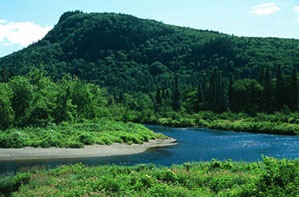 As David Holmgren, one of the founders explains, "It's the conversations you have with your neighbor over the garden fence which saves the world, and if you want to know what the news is, go outside and look." [42] In principle these sentiments sound very much like those of Free Software guru Richard Stallman, who claims "globalization is a very inefficient way of raising living standards of people overseas" and that a much better economic system would decentralize power and resources. [43] Holmgren situates this practice not in altruism but in clear-sighted common interest. And he refers to the historical record to confirm that caring for the self required caring for land and natural resources. In his view, permaculture "asks you to see yourself as one with the universe, and to measure its wonder for your mutual benefit. You and the rest of creation have the same interest at heart--survival--so you should look after each other." This invitation to care for self, family, community and neighbors in the widest possible sense--as we see in Native culture--reinserts humans into the Web of Life.
As David Holmgren, one of the founders explains, "It's the conversations you have with your neighbor over the garden fence which saves the world, and if you want to know what the news is, go outside and look." [42] In principle these sentiments sound very much like those of Free Software guru Richard Stallman, who claims "globalization is a very inefficient way of raising living standards of people overseas" and that a much better economic system would decentralize power and resources. [43] Holmgren situates this practice not in altruism but in clear-sighted common interest. And he refers to the historical record to confirm that caring for the self required caring for land and natural resources. In his view, permaculture "asks you to see yourself as one with the universe, and to measure its wonder for your mutual benefit. You and the rest of creation have the same interest at heart--survival--so you should look after each other." This invitation to care for self, family, community and neighbors in the widest possible sense--as we see in Native culture--reinserts humans into the Web of Life.
Like nature, permaculture rarely centralizes wealth because of the amount of poverty created in its wake. In nature a river might meander back and forth across a landscape bringing water to huge tracts of forest or arable lands. Likewise, permaculture constructs small-scale swales and keyline irrigation, to control small amounts of water flow over larger areas, leaving just enough wealth in each area to trigger healthy plant growth, which in turn spills over to unirrigated areas. Such modest, gravity-fed irrigation system could be found in Ladakh, in the high Himalayas before the area was developed. In Ladakh, such catchment of water irrigated entire arid areas with limited mountain runoff, using elaborate sharing schemes across households to produce rich and abundant crops and clean drinking water. After development--fed by an ideology that trusts to a disinterested "invisible hand" instead of the common interest of local villagers--the water became polluted, and staple crops were imported once local agriculture and ways of life were displaced by wage labor and the media and material attractions of capital. [44]
"Changes in the way we think, especially the emergence of design thinking, are more fundamental to the information economy than the hardware and software we use." [45] Although this is a permaculture principle, it might apply to the free and open software movement and the development of online communities; these are practice grounds for the kind of community development that permaculture activists seek. If Internet spaces function like practice grounds, it is because these areas are not fully colonized economically, legally or politically, though the colonial paradigm still influences our limited understanding of the digital commons. [46] For permaculture, the landscape is the textbook [47]; so to with digital culture though the landscape is virtual and made up of networks of human communication. What can this textbook teach us about human community, about ways to manage resources that move beyond the private / public dichotomy and into complex emergent social patterns that are sustainable?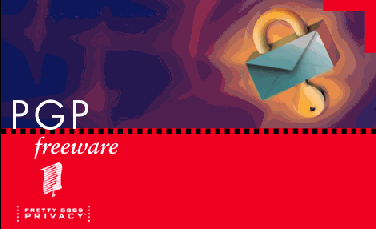 Many critics of closed, hierarchic institutions have recently turned toward the open software movement for an alternative model. While these critics applaud the sharing and openness of these seemingly global communities of software developers, they rarely look beyond the virtual veneer to analyze the specific mechanisms behind their success. Coders of open software are often more tribal than global. [48] The "free culture" model notwithstanding, a coder cannot simply refactor a module of the GNU/Linux kernel without the permission of other trusted developers. While open software communities do not resort to the command-and-control hierarchies of corporate and military structures, they do exercise a form of management, but one with surprising resonances to the forms of entanglement found in indigenous and permaculture communities.
Many critics of closed, hierarchic institutions have recently turned toward the open software movement for an alternative model. While these critics applaud the sharing and openness of these seemingly global communities of software developers, they rarely look beyond the virtual veneer to analyze the specific mechanisms behind their success. Coders of open software are often more tribal than global. [48] The "free culture" model notwithstanding, a coder cannot simply refactor a module of the GNU/Linux kernel without the permission of other trusted developers. While open software communities do not resort to the command-and-control hierarchies of corporate and military structures, they do exercise a form of management, but one with surprising resonances to the forms of entanglement found in indigenous and permaculture communities.
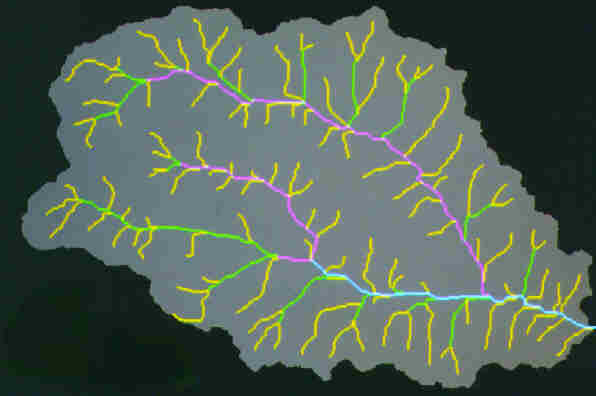 Local trust (or lack thereof) is easy to establish when members share an ecosystem or physical community. But how do you build a community in a virtual space where members have no prior relationship? Furthermore, how do you communicate with co-workers or family and friends in a way that is secure from sniffing software like FBI's Carnivore?
Local trust (or lack thereof) is easy to establish when members share an ecosystem or physical community. But how do you build a community in a virtual space where members have no prior relationship? Furthermore, how do you communicate with co-workers or family and friends in a way that is secure from sniffing software like FBI's Carnivore?
While Certification Authorities like Verisign have emerged as third-party guarantors of net identity, many open software programmers prefer to roll their own identity via public key encryption, which can operate via peer-to-peer networks rather than a centralized structure. PGP ("Pretty Good Privacy") is one of the most popular systems for verifying network identity among groups of people who will be working together. PGP verification begins with face-to-face contact at key signing parties [49], gatherings of people who verify each other's identity by checking ID cards, faces, and anecdotal evidence ("This is my husband, Jim"). Once identities are confirmed face to face, users sign each other's public keys, effectively hinging one developer's credibility on that of another developer--more catchment than detachment. 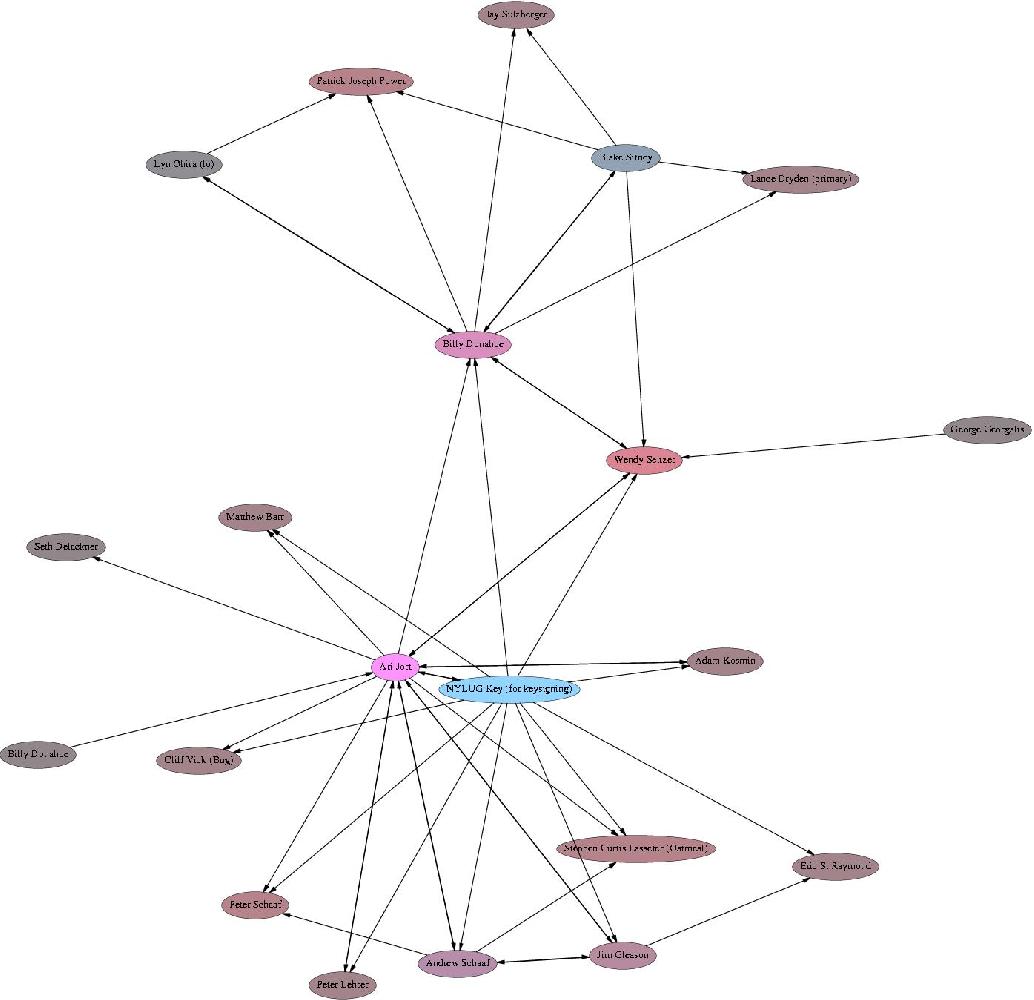 As if to echo Holmgren's belittlement of hardware and software, computers are forbidden at such meetings because they could compromise security. [50] If people used a computer to sign keys at the party, it would be hard to tell if the machine was compromised, or set up to capture the PGP information, or even infect it with a virus. It's interesting that key signers seem more concerned about exchanging computer viruses than biological ones, despite all the hand shaking and card swapping; for this "virtual community," physical intimacy is not a liability but a sign of their interdependence and a prerequisite of the mutual trust they need to do their work. When key signers stand in a line to receive each other's identity written on a piece of paper, it is a ritualistic echo of the Powhiri ceremony by which the Maori greet newcomers, standing opposite each other in a line and touching foreheads so as to receive each other's breath in the hongi greeting
As if to echo Holmgren's belittlement of hardware and software, computers are forbidden at such meetings because they could compromise security. [50] If people used a computer to sign keys at the party, it would be hard to tell if the machine was compromised, or set up to capture the PGP information, or even infect it with a virus. It's interesting that key signers seem more concerned about exchanging computer viruses than biological ones, despite all the hand shaking and card swapping; for this "virtual community," physical intimacy is not a liability but a sign of their interdependence and a prerequisite of the mutual trust they need to do their work. When key signers stand in a line to receive each other's identity written on a piece of paper, it is a ritualistic echo of the Powhiri ceremony by which the Maori greet newcomers, standing opposite each other in a line and touching foreheads so as to receive each other's breath in the hongi greeting
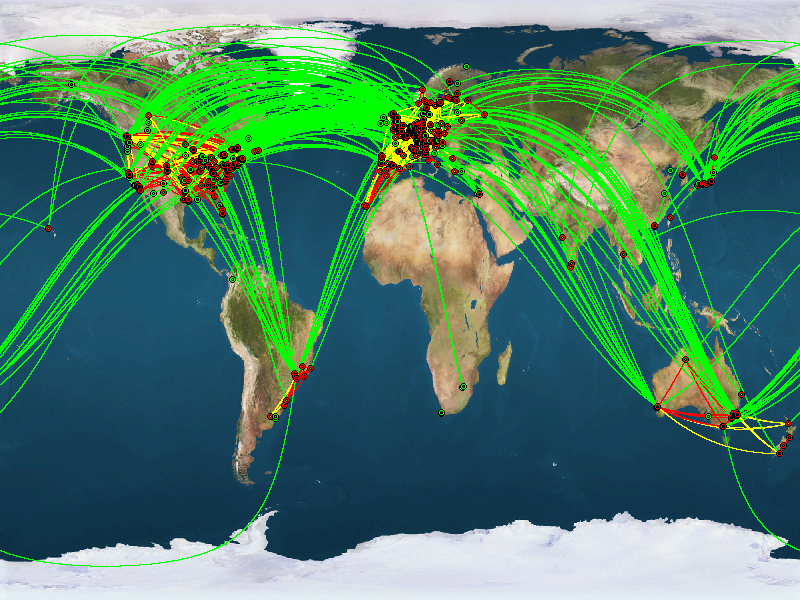 The more signings a public key gets--the more attached it becomes to other public keys--the more trusted it becomes. When the party is over, when identity is confirmed, people sign each other's public keys, thereby increasing their credibility. When an encrypted email message arrives in an email box--signed by one very credible public key, or three fairly trusted public keys--then the receiver can be almost certainly the message was sent by the person who claims to have sent it. The receiver can then use her private key to decrypt the message. Ironically this makes digital signatures more trustworthy than paper ones, which are easily forged. Paper signatures on treaties are useful for colonial powers, because they seem to command trust, but in the end, as repeated Native American experience confirms, these paper signatures are not worth the paper they were written on, certainly nowhere near the power face-to-face trust originally had in Native communities.
The more signings a public key gets--the more attached it becomes to other public keys--the more trusted it becomes. When the party is over, when identity is confirmed, people sign each other's public keys, thereby increasing their credibility. When an encrypted email message arrives in an email box--signed by one very credible public key, or three fairly trusted public keys--then the receiver can be almost certainly the message was sent by the person who claims to have sent it. The receiver can then use her private key to decrypt the message. Ironically this makes digital signatures more trustworthy than paper ones, which are easily forged. Paper signatures on treaties are useful for colonial powers, because they seem to command trust, but in the end, as repeated Native American experience confirms, these paper signatures are not worth the paper they were written on, certainly nowhere near the power face-to-face trust originally had in Native communities.
The best way to develop and expand webs of trust for secure communication over the Internet is to hold as many key-signing parties as possible. Frequent meetings ensure that the web of trust is "deep and tightly interlinked," thus making it harder to crack. PGP protects the parties involved in a communication as well as ensuring the integrity of the software produced. Though used extensively by open software developers to check out software modules and/or sign off on approved modules, PGP guarantees can also safeguard the passing of any kind of information among users in a web of trust. The more people use encryption, the less information can be sniffed by government or corporate software, and the more thoughtful they become about the kind of information they casually distribute via any technology. [51] Practicing PGP is a constant reminder that "not all information wants to be free."
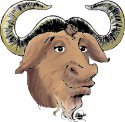 Beyond creating security, PGP parties also generate real local political communities since they involve face-to-face meetings by people who often share political and ethical concerns including civil liberties, the future of cryptography, and Internet regulation--all attempts to prevent the enclosure of emerging digital commons. In the digital as well as real worlds these are basic freedoms that generate passionate support. Furthermore, holding PGP parties allows a local area to configure its servers and technology to run PGP, making it available for others to use. Building this infrastructure across the Internet through local webs of trust creates a communication system that looks less like a global net and more like strongly linked local nodes with ties to other local nodes. This is not a global village, but a tribal web.
Beyond creating security, PGP parties also generate real local political communities since they involve face-to-face meetings by people who often share political and ethical concerns including civil liberties, the future of cryptography, and Internet regulation--all attempts to prevent the enclosure of emerging digital commons. In the digital as well as real worlds these are basic freedoms that generate passionate support. Furthermore, holding PGP parties allows a local area to configure its servers and technology to run PGP, making it available for others to use. Building this infrastructure across the Internet through local webs of trust creates a communication system that looks less like a global net and more like strongly linked local nodes with ties to other local nodes. This is not a global village, but a tribal web.
This new kind of kinship may seem abstract to those who haven't been to a key signing, but its emergence is easy to see in diagrams of webs of trust. Applications such as Sig2dot.pl, a PGP key ring graph generator, can produce a graph of all of the signature relationships in a GPG/PGP key ring, including the network developed at PGP party. "Graphing the web of trust in your local area as you build it can help motivate people to participate as well as giving everyone a clear sense of what's being accomplished as things progress." [52] The correlation of visual diagrams with the establishment of kinship patterns sounds remarkably like the protocols in Papua New Guinea for Malanggan. The idea that creativity and cultural production depend on and are correlated with the social safety net of kinship groups is a digital recuperation of an indigenous wisdom about social wealth. While peer-to-peer culture is relatively new by comparison to indigenous cultures, these "natives of cyberspace" [53] may be able to re-imagine a lost common heritage more readily than those of us still burdened by the tropes of print and visual culture.
In fact, geeks--for all their obsession with protocol, syntax and patches--can demonstrate a sophisticated grasp of current political dangers and issues when they care about them. Because our culture is increasingly mediated through lines of code, programmers are in a privileged position to watch the effects of such mediation on the consuming public--so we can hope that as their awareness grows, programmers will expand their concerns beyond bugs in the latest Debian distribution to include broader issues like child prostitution or deforestation.
Curiously, a humorous allusion to a political mission surfaces in the middle of "Notes on handling the Perl Patch Pumpkin," which explains protocol for contributing a patch to a development team. Near the end of this online document is a section called "How to Save the World." While the instructions are prosaic--"You should definitely announce your patch on the perl5-porters list," "You should make it quite clear that a subversion is not a production release" [54]--the humorous linking of participation of the production of a shared resource with the saving of the world is far from na´ve. In fact it is a wakeup call from the cultural propaganda that proclaims that, in Stallman's words, "sharing with your neighbor is the moral equivalent of attacking a ship." [55] Of course if we recall that many pirate ships were precisely dispossessed people such as peasants and African slaves taking back a commons that had been "criminalized" [56], then piracy itself appears as a commoner's logical response to enclosure of land and body. [57]
While it may not be surprising that programmers are concerned with the securing of "individual liberties" that once motivated piracy, it is interesting to see key signing parties dwell on a discussion of "sovereignty," [58] an issue that grounds Native political struggles. Used by Native Americans, sovereignty signifies their right to enter into treaties with other nations, and to be recognized and respected with full rights accruing to nations. The US government takes pains to associate national security and cryptography, regulating the latter's export. But neither Native tribes nor key signers are ultimately interested in national sovereignty so much as individual and tribal sovereignty. [59] This concern is echoed in David Berry's summary of "Libre" culture--a sort of Creative Commons with an ethical slant: "Political struggle will no doubt be oriented towards the nation state [....] but it cannot remain there alone [....] Creativity is at once too small and too large. Political action and the struggle for true democracy will have to be aimed simultaneously at local and global levels." [60]
Berry goes on to propose a "treaty obligation" to prevent "the commodification of human DNA and life itself. Or a UN protectorate to defend the sanctity of ideas and concepts. We might picture something akin to Bruno Latour's 'Parliament of Things,' a space where not just the human is represented, but all of life has a defender, all of life has a voice." Of course, this kind of community voice--one that speaks for all living things--already exists among indigenous peoples. When the UN established the Geneva Convention on human rights after World War II, the Six Nations and the Lakota suggested they were leaving something out:
The parallels in understanding between the Libre Society and Native culture, the acknowledgement of a Web of Life to which we all belong, points to an economic and political practice that moves beyond the limited freedoms established by the commons, either traditional or digital. While we may yearn for a long-lost commons where humans were landkeepers, where they cared for all living things, what we need now must move beyond the logic of common/enclosed, of free/private. For in today's context, any commons is only respite from a larger cultural model of property, theft, enclosure, and loss of political liberty for all humans and exploitation of all life. To move beyond human rights toward the rights of all living things, what Leach calls "common rights" [62], we need the commons to become the rule of human culture rather than the exception. That human beings in Native culture, Permaculture and digital culture are trying to protect and reclaim some common ground, some space for remembering and reinventing sustainable cultures, is a message of hope in otherwise dismal times
References: [1] K. Christen, "Gone Digital: Aboriginal Remix and the Cultural Commons," International Journal of Cultural Property 12 (2005), pp. 315-345.
[2] Levellers, whose power base was in the New Model Army, upheld common rights, until their leaders were executed and their followers cashiered by the Grandees. "The Grandees were represented by Henry Ireton (son-in-law of Oliver Cromwell), Oliver Cromwell, and some others. Each party put forward a pamphlet to lay out their position. The Levellers' pamphlet, written by civilians, was entitled Agreement of the People. The Grandees' pamphlet, endorsed by the General Council of the Army, was written by Henry Ireton, and entitled The Heads of the Proposals. It put forward a constitutional manifesto which included the preservation of property rights and maintenance of the privileges of the gentry;" http://en.wikipedia.org/wiki/Levellers
[3] P. Linebaugh, "Charters of Liberty in Black Face and White face: Race, Slavery and the Commons," Mute (2005), http://www.metamute.org/en/node/5602, accessed May 18, 2006, p. 4.
[4] See Forest Charter at: http://www.constitution.org/sech/sech_045.htm
[5] Gentry and Clergy are prohibited in the forest charter, since they are not local, both because a number came from France with the Normans, and also because others did not live in close proximity of the forests. "17. Now these liberties with regard to the forest we have granted to all, saving to the archbishops, bishops, abbots, priors, earls, barons, knights, and other persons both ecclesiastical and lay, [also] to the Templars and the Hospitallers, the liberties and free customs in forests and outside them, in warrens and in other things, that they earlier had. Moreover, all these aforesaid liberties and customs, which we have granted to be observed, in so far as concerns us, toward our men, all persons of our kingdom, both clergy and laity, shall, in so far as concerns them, observe toward their men."
[6] http://www.perl.com/doc/manual/html/Porting/pumpkin.html
[7] Some theorists claim that the major conflict of our time is not between "democracy" and "terror," but between civilized cultures and indigenous cultures, the latter holding all the evolutionary knowledge needed to live sustainable in each of the areas they inhabit. See "Traditional Culture Strikes Back," http://www.iht.com/articles/2005/07/20/news/edpfaff.php#
[8] The Dawes Act 1887, which turned communally held Native American land into private property, ostensibly to speed assimilation and help Natives become self-sufficient, had disastrous effects leading to massive loss of land and culture: "some sixty million acres (240,000 km) of treaty land (almost half) were opened to settlement by non-Indians. The Act had one of the most substantial impacts on Natives, most significantly affecting Native gender roles. This Act broke up the reservation lands into privately owned parcels of property [given to men]. In this way, the legislators hoped to complete the assimilation process by deteriorating the communal life-style of the Native societies and impose values of strengthening the nuclear family and values of economic dependency strictly within this small household. Legislators' opinions of communal living saw the extended family as "needy" since the Indigenous ideas of wealth contrasted and disagreed with Western ideas of wealth. Indigenous people valued generosity and received status by being generous. Western values form around individual wealth and surplus and status is gained from these same values. The kin-network, which was the base of economic and social reproduction in Indigenous societies, split and the reservation became a checkerboard pattern” The Act forced Native people onto small tracts of land distant from their kin relations. Traditionally, in most Indigenous societies, women were the agriculturists while the men were the hunters and warriors. The Allotment policy depleted the land base, ending hunting as a means of subsistence. According to Victorian ideals, the men were forced into the fields to take on the woman's role and the women were domesticated. This Act imposed a patrilineal nuclear household onto many traditional matrilineal Native societies. Native gender roles and relations quickly changed with this policy since communal living shaped the social order of Native communities. Women were no longer the caretakers of the land and they were no longer valued in the public political sphere." See: http://en.wikipedia.org/wiki/Dawes_Act and http://www.csusm.edu/nadp/a1887.htm. One might compare this modern enclosure with the enclosures in Europe in the previous centuries.
[9] M. Strathern, "Imagined Collectivities and Multiple Authorship" in R. A. Ghosh (ed.), CODE: Collaborative Ownership in the Digital Economy (The MIT Press: Cambridge, MA, 2005), p. 18.
[10] See: http://pool.newmedia.umaine.edu/
[11] J. Leach, "Modes of Creativity and the Register of Ownership" in R. A. Ghosh (ed.), CODE: Collaborative Ownership in the Digital Economy (The MIT Press: Cambridge, MA, 2005), p. 37.
[12] J.E. Brown, "Becoming Part of It" in D. M. Dooling, P. Jordan-Smith (eds.), I Become Part of It: Sacred Dimensions in Native American Life (Parabola: New York, 2002).
[13] Ibid., p. 15.
[14] Ibid., p. 20.
[15] S. Gill, "It's Where You Put Your Eyes" in D. M. Dooling, P. Jordan-Smith (eds.), I Become Part of It: Sacred Dimensions in Native American Life (Parabola: New York, 2002).
[16] Ibid., p. 83.
[17] Compare this to Leach's (2005) description of how creativity produces both children and spirits: "creativity, understood as the regeneration of people and places through the work of family groups”Children, like spirit designs, are generated in the specific productive partnerships of kin groups."
[18] Ibid., [15].
[19] See Blais & Ippolito, At The Edge of Art, for a description of executable art, art which has an effect in the material world: http://at-the-edge-of-art.com/
[20] Ibid. [11], p. 33.
[21] Ibid., [9], p. 20.
[22] M. Waring, If Women Counted: A New Feminist Economics (Harper Collins: New York, NY 1990).
[23] See http://www.savepassamaquoddybay.org/ and Ntulankeyutmonen Nkihtaqmikon (We take care of the homeland), http://penbay.org/sipayik/
[24] Ibid. [12], p. 12.
[25] Ibid., p. 12.
[26] T. L. Friedman, The World is Flat, (Farrar, Straus and Giroux: New York, NY, 2005)
[27] gkisedtanamoogk, "Miingignoti-Keteaoag: Decolonizing Justice and Sovereignty" (1997), http://www.geocities.com/CapitolHill/9118/gkis10.html. D. Holmgren, Permaculture: Principles & Pathways Beyond Sustainability (Holmgren Design Services: Hepburn, Australia, 2002). Richard Stallman, "Copyright and Globalization in the Age of Computer Networks" in R. A. Ghosh (ed.), CODE: Collaborative Ownership in the Digital Economy (The MIT Press: Cambridge, MA, 2005).
[28] R. A. Ghosh (ed.), CODE: Collaborative Ownership in the Digital Economy (The MIT Press: Cambridge, MA, 2005), p. 7.
[29] Ibid., p. 7.
[30] See Stallman: "The centralization and economy of scale introduced by the printing press and similar technologies is going away." And McLuhan (1962): "What we have called 'nations' in recent centuries did not, and could not, precede the advent of Gutenberg technology anymore than they can survive the advent of electric circuitry with its power of totally involving all people in all other people."
[31] B. Boateng, "Square Pegs in Round Holes? Cultural Production, Intellectual Property Frameworks, and Discourses of Power," in R. A. Ghosh (ed.), CODE: Collaborative Ownership in the Digital Economy (The MIT Press: Cambridge, MA, 2005), pp. 61-74; A. Seeger, "Who Got Left Out of the Property Grab Again: Oral Traditions, Indigenous Rights, and Valuable Old Knowledge," in R. A. Ghosh (ed.), CODE: Collaborative Ownership in the Digital Economy (The MIT Press: Cambridge, MA, 2005), pp. 75-84; K. Warren, and J. Jackson, (Eds.) Indigenous Movements, Self-Representation, and the State in Latin America. (Univ. of Texas Press: Austin, 2002).
[32] GPL offers an interesting mix of these two, not entirely successful from an indigenous perspective, but certainly effective as anti-enclosure device. Discussion of the complex ways GPL thwarts colonial paradigms of property is beyond the scope of this paper.
[33] F. Myers, "Some Properties of Culture and Persons," in R. A. Ghosh (ed.), CODE: Collaborative Ownership in the Digital Economy (The MIT Press: Cambridge, MA, 2005), pp. 45-60.
[34] Ibid. [11], p. 34.
[35] G. Bell, The Permaculture Way (Chelsea Green: While River Junction, VT, 1992), p. 17.
[36] D. Holmgren, Permaculture: Principles & Pathways Beyond Sustainability (Holmgren Design Services: Hepburn, Australia, 2002), p. 27.
[37] Ibid., p. 15.
[38] More on Mollison's film at http://www.networkearth.org/perma/culture.html. Permaculture co-founder (with Mollison) David Holmgren's own rhetoric occasionally falls back on the pyramid metaphor, but other discussions suggest he believes the strength of permaculture lies precisely in its potential for offering a non-hierarchic ontology.
[39] Ibid., p. 51.
[40] Ibid., p. 27.
[41] Ibid. [35], p. 212.
[42] Ibid. [36].
[43] Richard Stallman, "Copyright and Globalization in the Age of Computer Networks" in R. A. Ghosh (ed.), CODE: Collaborative Ownership in the Digital Economy (The MIT Press: Cambridge, MA, 2005), p. 331.
[44] H. Norberg-Hodge, Ancient Futures: Learning from Ladakh (Sierra Club Books: San Francisco, CA, 1992).
[45] Ibid. [36], p. 14.
[46] See Blais, "In the Presence of the Sacred: Indigenous Alternatives to Colonized Cyberspace," forthcoming in M. Stewart and P. Wilson (eds.), Indigenous Media (Duke University Press: Durham, NC 2006).
[47] Ibid. [36], p. 15.
[48] Margaretha Haughwout, "A Reflecting and/or Refracting Pool: When a Community Becomes Autonomous Online," First Monday 11, no. 4 (April 2006), Retrieved April 27, 2006 from http://www.firstmonday.org/issues/issue11_4/haughwout/
[49] See: http://www.cryptnet.net/fdp/crypto/gpg-party.html
[50] Computers are a problem at PGP meetings because "binary replacement or system modifications are very easy ways to compromise PGP systems." See: http://www.cryptnet.net/fdp/crypto/gpg-party.html
[51] This is especially true when that information is a matter of life and death, as it was when Patrick Ball, open-source programmer-cum-human-rights activist, was gathering evidence for the war-crimes trial of ex-Yugoslavia's leader Slobodan Milosevic. His statistics proved that killings and refugee flows in Kosovo were independent of military activity by NATO or the Kosovo Liberation Army but tied directly to Serb attacks. While the information he needed might have been sent by email, there were obvious security risks for all involved. The evidence based on interviews, government records, and testimony by Albanian border guards was often provided by face-to-face-contact with people who passed on the information in the form of tapes, disks, or other media. This verification of information through human contact, whether crime data on a diskette or a patch pumpkin on a string, suggests that true security depends on human relationships, regardless of the sophistication of our military technology. It is not the database that saves lives, but the human network through which the data passes on its way to the database. Patrick Ball's "sneakernet" not only provided information under more secure conditions, but it also afforded the kind of face-to-face verification upon which PGP security is based.
[52] Advice from the GPG key signing party "How To" page at http://www.chaosreigns.com/code/sig2dot/
[53] J.P. Barlow, "Art after virtual reality," paper presented at a meeting at the Guggenheim Museum Soho, New York, October 27, 1993.
[54] http://www.perl.com/doc/manual/html/Porting/pumpkin.html#Help_Save_the_World
[55] Ibid. [43], p. 325.
[56] Waltham Black Act of 1722 effectively criminalized the commons.
[57] Ibid. [3]. Linebaugh claims that "the crisis of the commons began as a financial crisis which itself arose from slaving, and that piracy was "multiracial and it was against the slave trade [”] Sixty of Blackbeard's crew of one hundred were black."
[58] "GPG keysigning Party HOW TO," http://www.cryptnet.net/fdp/crypto/gpg-party.html#ss1.4)
[59] "The idea of the nation in contemporary Latin America is based on the negation of indigenous cultures." [My translation from the Spanish] Rudolfo Stavenhagen in A. Ramos, "Cutting Through State and Class" in K. Warren and J. Jackson (eds.), Indigenous Movements, Self-Representation, and the State in Latin America (University of Texas Press: Austin, TX, 2002).
[60] D. Berry & G. Moss (2006), http://www.freesoftwaremagazine.com
[61] O. Lyons, "Our Mother Earth" in D. M. Dooling, P. Jordan-Smith (eds.), I Become Part of It: Sacred Dimensions in Native American Life (Parabola: New York, 2002), pp. 273-4.
[62] Ibid. [11]
